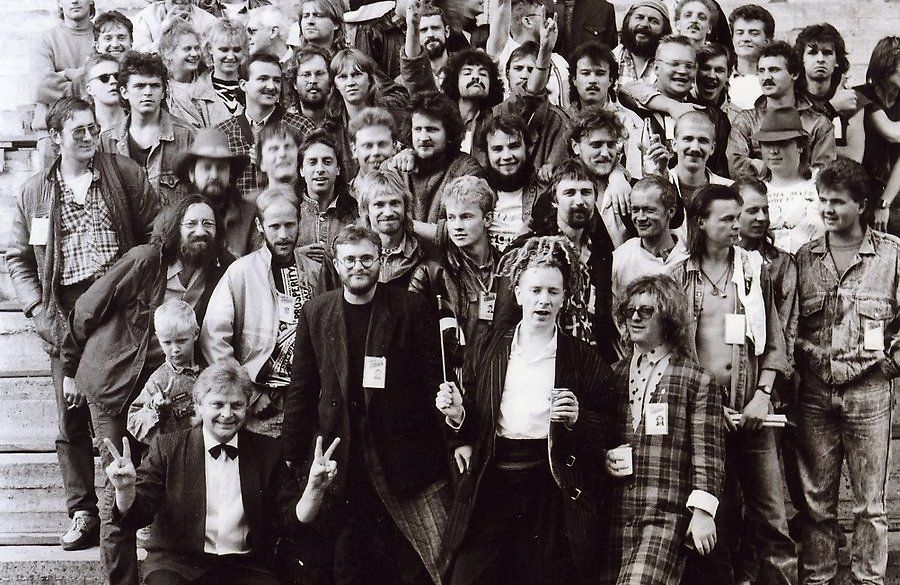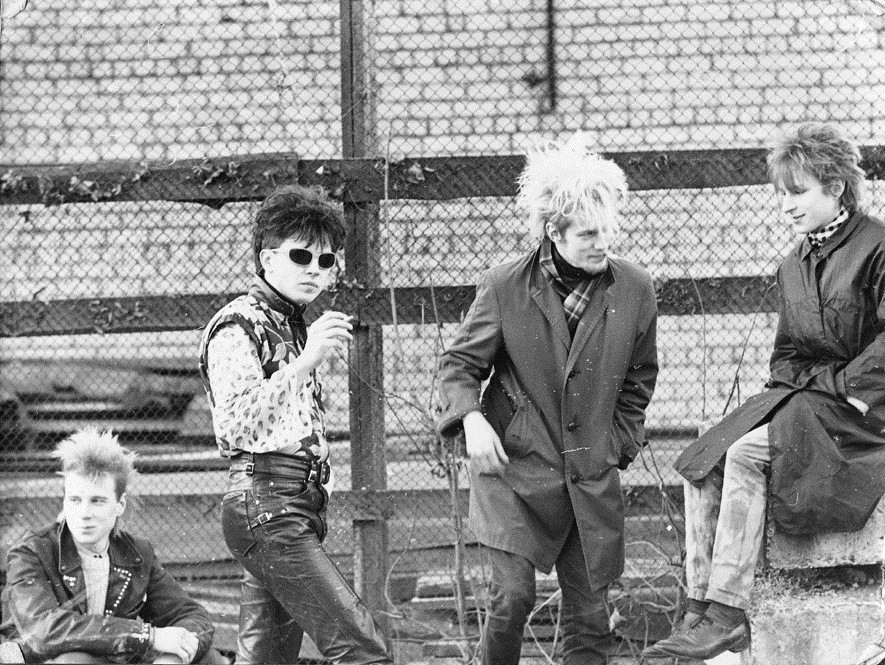Estonia was once producing revolutionary rock from within the Soviet system. The progressive rock scene even influenced the country’s re-independence movement.*
When one talks about a music in the Soviet Union and the Soviet-era Estonia, it is essential to define what kind of music is up for analysis. The many cultures of the Soviet Union represented a plethora of musical traditions which came into closer contact during the Soviet rule than in previous periods. At the same time, the 20th century saw music to become more international in virtually every country in the world, due to the increasing ease of long distance travel – and more importantly, the abundance of radio, television and records by the middle of the century.
After Joseph Stalin’s death, it’s fair to say that classical music thrived in the Soviet Union. From 1953 until 1991, classical ensembles throughout the USSR enjoyed creative freedom and prescriptions against musicians and composers were more or less over. By this time, mostly musicians who defected or actively made grandiose political statements, were in danger of being banned from the stage and radio. Crucially, the stylistic tests Stalin applied to music, were more or less abandoned.
Yet, during Stalin’s time also, classical music flourished, but in a much different way. Shostakovitch and Stalin for example, had a peculiar love-hate relationship which by 1948 deteriorated beyond repair due to the Zhdanov Decree which proscribed Shostakovitch, Prokofiev and Khachaturian. But by Khrushchev’s period, all three composers were fully rehabilitated and the uncertainty of the Stalinist years was over.
Whilst the great orchestras of Moscow and Leningrad, although never able to afford the high quality instruments available to the Berlin and Vienna Philharmonic orchestras, were never in a financially uncertain position – nor were there barriers to audiences enjoying their music. It is for this reason that many, particularly in Russia, look at the post-Stalinist Soviet years as a period of vibrancy and joy for classical music, especially contrasted with the 1990s when many orchestras and other ensembles found themselves completely abandoned by the lack of government funding.
Estonia’s progressive rock scene
For Estonia, it was the great choral tradition which represented the touchstone of traditional music – and the proscription of many traditional songs after the loss of independence in 1940 gave many of these songs a renewed nationalist meaning.
But by the mid-century new forms of music were emerging throughout the world. Jazz had matured significantly in terms of musical technicality since its early origins, and the contemporary rock music of the 1960s which began as a British take on older American rhythm and blues, began to become more and more musically literate, technical, and socially relevant.
It was at this time that Estonia established itself as having the most forward looking rock scene in any part of the Soviet Union. To combat the rise of rock in the Soviet Union, official rock bands, the so-called “VIAs” (vocal & instrumental ensemble – editor) were organised by the state. Many of these bands were very good and some are still much loved (by older generations).
But just as rock bands, pre-fabricated by record companies, became unfashionable in the capitalist world, so too did young Soviet citizens become tired of “official” rock. It was in the late 60s and early 70s that Estonia’s rock scene truly established itself.
Progressive rock which grew out of the late 60s psychedelic scene in London, became one of the most important styles in Estonia. In the 1970s, it is fair to say that after Britain, Holland and Italy, Estonia probably produced the most authentic progressive rock bands in the world; bands whose neo-classical and jazz infused music most closely resembled the cutting edge founding bands of the genre (bands like King Crimson, Pink Floyd, Yes, Genesis and ELP).
“In the 1970s, it is fair to say that after Britain, Holland and Italy, Estonia probably produced the most authentic progressive rock bands in the world”
One of the most musically important groups of this period was Mess, led by the multi-talented Sven Grünberg. Their shows were often cancelled by the authorities and the only album they were able to record, was lost for many years – although it has now been fully restored. Their album, “Küsi Eneselt” (Ask Yourself), can now be viewed as a global milestone in the history of rock music.
Bands like Ruja, featuring the classically gifted Rein Rannap, became cultural legacies. Ruja had an “on-and-off again” relationship with the authorities. Sometimes they were persecuted, but the official Soviet record label Melodiya nevertheless released several of Ruja’s records, after all.
Rock music as part of Estonia’s cultural identity
Although many rock bands did not have it easy in Estonia in the 1970s, it was still much easier to be a rock musician in Soviet Estonia than in Soviet Russia. In Russia, the persecution of independent rock artists was much more severe and as a result, the organic rock scene in Russia lagged behind Estonia.
In the 1980s the Estonian rock scene continued to expand. New punk bands like J.M.K.E. existed alongside Ruja, who continued strongly in the 80’s, and jazz fusion bands like Kaseke and Data began getting fans outside of the Soviet sphere.
Along with traditional choral music, it was the Estonian rock scene which formed the two most important genres of the “Singing Revolution”. Music that in many countries is seen as self-indulgent or party music, became an important part of Estonia’s cultural identity in the years before re-independence.
“Along with traditional choral music, it was the Estonian rock scene which formed the two most important genres of the ‘Singing Revolution’.”
In many ways, the culmination of Estonia’s important role in establishing semi-independent rock music scene – and indeed a great deal of jazz in Soviet times – was the “Rock Summer” festival which began in 1988.
The festival saw Estonia welcoming highly renowned artists from around the world who played to delighted audiences. The festival’s line-up remained true to the spirit of Estonian rock; it did not discriminate against any particular sub-genre of rock.
The headliners of the original festival included progressive rock icon Steve Hackett of Genesis, John Lydon’s post punk pioneers PIL and the new-wave band Big Country. After years of being one of the few Soviet Republics whose contemporary rock captured the interest of the wider world, in the summer of 1988 some of the world’s most important and most diverse musical talents came to Estonia.

With the exception of cancellation of 1990 (difficult to hold a rock festival in the middle of a revolution), the festival continued until 1997, and continued to attract some of the most impressive bands from around the world.
In an age where the internet makes the banning of music impossible and international artists often stop in Tallinn as part of world tours, the resurrected festival would not have the kind of unique significance the original one had. But it is good to remember the period when Estonia was producing revolutionary rock from within the Soviet system.
In 1988 many of the biggest stars came not to festivals in Moscow or Kiev, but to tiny Tallinn – perhaps an acknowledgement that Tallinn was the Soviet capital of rock.
Cover: Tõnu Trubetsky (second left, formed a band called Vennaskond in 1984) and singer-songwriter Villu Tamme (third left) with punk band J.M.K.E. in 1986 in Tallinn. Photo by punk.bumpclub.ee. * This article was originally published on 17 June 2013. It was lightly edited on 17 August 2017.


Trubetsky formed Vennaskond in 1984. Tuberkuloited has nothing to do with him.
That’s right. I also played in Trubetsky’s Vennaskond from 1989-1990.
Is there a way to buy some of this stuff? Mess and Vuja are good!